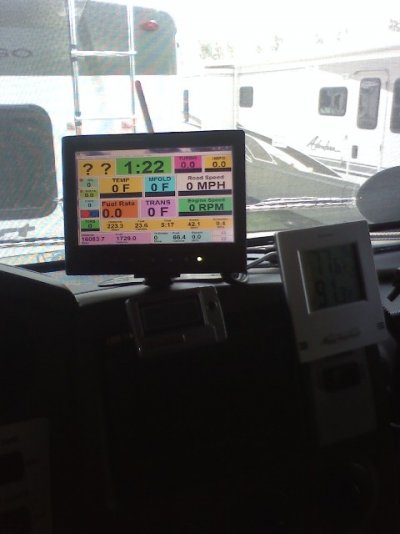Kim (skyking4ar2) Bertram
Moderator Emeritus
I am able to monitor the trans temps in our new coach, a 450hp Cummins, something I did not have in the old one. I was seeing the temps run from 170 to high 190's between Portland and Bend recently pulling what I thought were reasonable but not steep grades. Allison appears to consider 160 to 200 a normal range.
The coolant temps were bouncing just a bit (analog gauges only), but nothing approaching hot and the outside temps were not ferocious either.
Those of you with this particular model trans, what kind of temps do you see? I ask because I do get a smell inside the coach that I cannot locate at the end of an uphill grade and am suspicious of some kind of blowby hitting something hot. I have a first service appointment scheduled at Freightliner in Redding, CA, but I have to get there, too. 8)
The coolant temps were bouncing just a bit (analog gauges only), but nothing approaching hot and the outside temps were not ferocious either.
Those of you with this particular model trans, what kind of temps do you see? I ask because I do get a smell inside the coach that I cannot locate at the end of an uphill grade and am suspicious of some kind of blowby hitting something hot. I have a first service appointment scheduled at Freightliner in Redding, CA, but I have to get there, too. 8)

